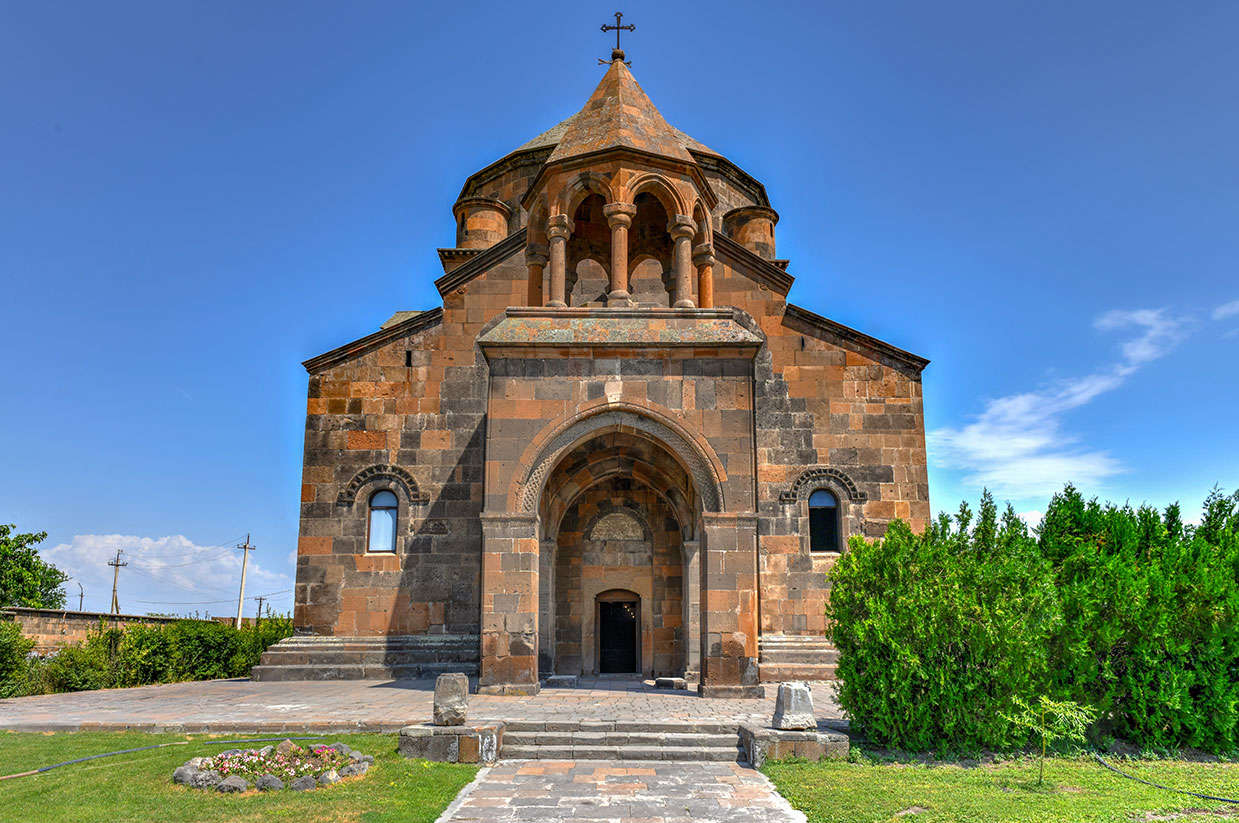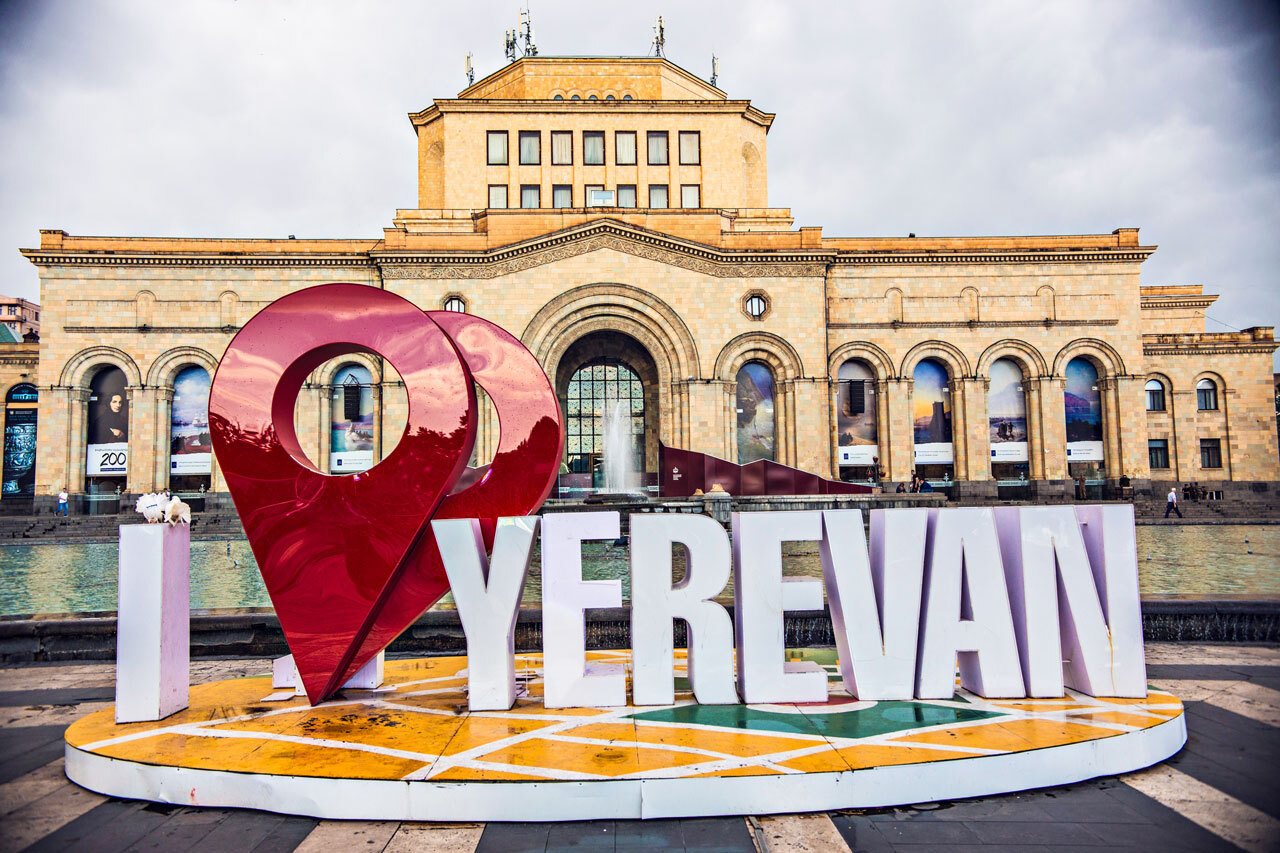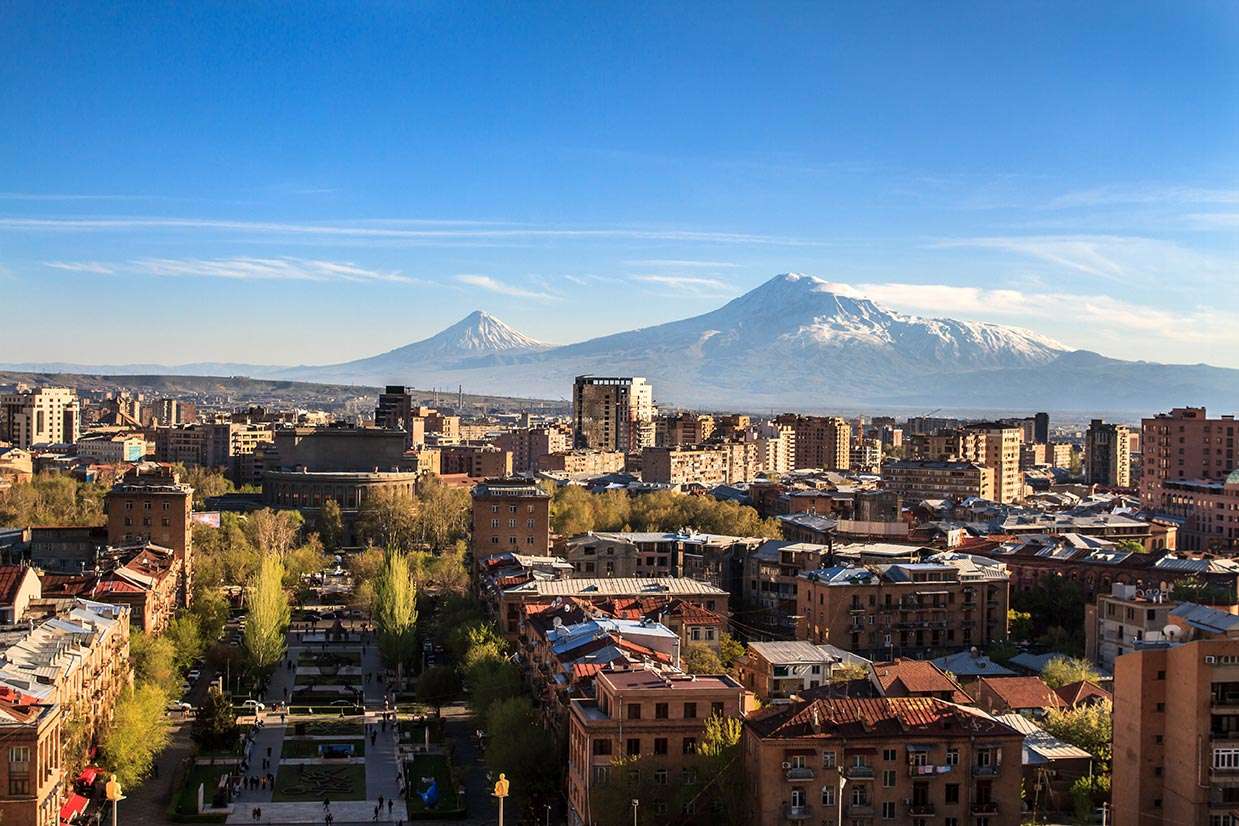St Hripsime Church
Etchmiadzin is the religious centre of Armenia. Here, a real masterpiece, the Mother Cathedral is located. Apart from it, there are two other well-known churches - churches of the Saints Gayane and Hripsime. The story of the Holy Hripsime is usually presented as a crucial episode in the Christianization of Armenia. Hripsime is said to have been the granddaughter or niece of the Roman Emperor Claudius’ wife.
According to the legend she was educated in the women's Roman convent of Gayane, from where she escaped with 70 other nuns as Emperor Diocletian wanted to marry her because of her beauty. She finally found refuge in Armenia, but the Armenian King Tiridat tried to make Hripsime his wife. Since she refused him, she was martyred together with other nuns, who were accompanying her. Shortly thereafter, St. Gregory, was called to heal the ruler, who was transformed into a wild boar, asked the king to hold a religious funeral for the bodies of the saints. After Tiridates was healed, he adopted Christianity and the whole country followed his example. The church was constructed by King Tridates and Grigor the Illuminator on the site where Hripsime died. In the 5th century, it was destroyed by the Persians and later rebuilt by Catholicos Sahak Partev. The church was finally reconstructed by the Catholicos Komitas I Aghtsetsi. In an inscription on the main altar, he describes himself as the "builder of the Holy Hripsime Church". It was renovated in 1898. Several foundations have been discovered, showing that there was a pagan temple on the site of the church.
The Church of the Holy Hripsime is one of the best examples of early medieval Armenian spiritual buildings with a complicated structure. In 2000, it was included in the UNESCO World Heritage List. Two prominent Armenian Catholicoses, who played an important role in Armenian history, are buried in the courtyard of the church - Catholicos Astvatsatur (1715-1725) and Catholicos Karapet the 2nd (1725-1729). From the outside, the church is a square dome construction, but it is cross-shaped inside. Various architectural solutions have been implemented to ensure seismic safety. One such solution is the triangular niches on the outer walls. The church has a sixteen facet dome with round towers at the base. The interior design of the Holy Hripsime Church is not only complicated but also extraordinary. In the four corners of the church, there are large apses. Four narrow and cylindrical niches lead to the four extensions in the four corners. The interior is generally modest, without oversized decorations. The vaulted tomb of the Holy Hripsime is located under the main altar. Many architectural features of this church were repeatedly reproduced in various Armenian and Transcaucasian buildings. Near this church, one may unveil some churches similar in appearance, for example, the Holy Mother Church in Varagavank (10th century). In summary, Hripsime has been the embodiment of modesty and chastity over the centuries. Most visitors who bear the name "Hripsime" come to this church for being baptized. This popular tourist destination in Armenia is also depicted in a painting with Mount Ararat at the background by a famous Armenian painter Martiros Saryan. Accordingly, the picture bears the name "Ararat and the Church of Holy Hripsime".






